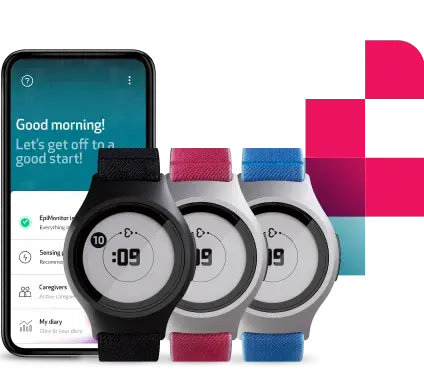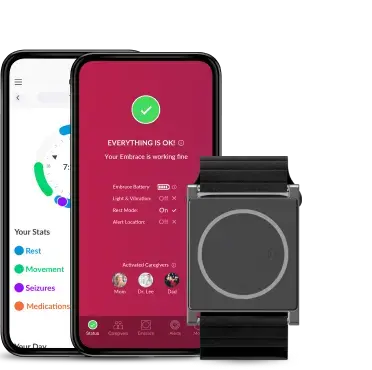Measuring the stress levels of an Analog Space Mission crew using EmbracePlus
This post was written with the collaboration of Jas Purewal, a research scientist and crew member of Analog Missions.
Jas Purewal has a Master's degree in Physics with Astrophysics. She has been working as a research scientist for over 10 years and currently works as a senior scientist for a UK national lab. During her career she has also worked with several US national labs. In 2020 during the pandemic, Jas built a low-fidelity “space dome” and conducted her own solo space analog mission, the first of its kind in the UK. Jas is the co-creator of The Analog Astronaut Community, which was launched earlier this year with the first International Analog Astronaut Conference.
Analog space missions are analogous to real space missions and have been used for decades by NASA, academics, and private industry as well as individuals to test equipment, conduct scientific research and investigate human factors, as a means of preparing for space on Earth.
In November 2022, an Analog Mission took place in Utah, in a unique environment chosen for its similarity to Mars, its arid nature providing opportunities for rigorous field studies as they would be conducted during an actual space mission. An all-female crew of 6 carried out their mission under the constraints of a simulated Mars mission for a duration of two weeks. One of the toughest challenges that analog crews face is behavioral issues related to mental health due to their isolation in a closed, confined space for a continuous period of time. An initiative led by crew Scientific Officer and XO Jas Purewal was testing an AI therapeutic robotic seal by PARO to investigate whether it can improve feelings of stress and loneliness in the crew, while monitoring their digital biomarkers using Empatica’s EmbracePlus.
What is tested during Analog Missions?
Analog Missions are used to conduct a variety of research, such as human factor research, test equipment, and assess team protocols and dynamics. Analog Missions take place in habitats around the world independent of government space agencies, which provide a platform to test various scenarios and activities in a safer context. Each crew arrives with a particular idea of what they want to test.
The crew of the November mission spent their time in a purpose-built space with various areas including a living module, a lab, and a green hab, which were all interconnected. They also conducted Extravehicular Activity (EVA) while wearing space suits. In a simulation, they conducted emergency rescue drills, such as assessing what to do if a crew member out on an EVA got injured, for example getting a twisted ankle. Most emergency scenarios are designed in a way that can induce real stress for the crew, which provided an opportunity to test the therapeutic potential of the pet robot while measuring their live physiological responses using EmbracePlus.
The impact of space travel on mental health
It doesn’t matter how well-trained the crew is or how well-practiced they are, being in an isolated environment with limited communication and being unable to step outside is challenging.
According to NASA: “Behavioral issues among groups of people occupying a small space over a long time, no matter how well-trained they are, are inevitable. The ‘possible hazards’ are a decline in mood, cognition, morale, or interpersonal interaction, sleep disorder, depression, fatigue, boredom. The more confined and isolated humans are, the more likely they are to develop behavioral or cognitive conditions.”
The question Purewal wants to answer is, ‘Can you get similar benefits of an AI robotic pet? Does interacting with PARO help you reduce your stress?’
Purewal was after an easy way to measure the crew members’ stress with a method that wasn’t their qualitative feedback, which is where the value of wearable tech comes in, as it presents an easy, non-invasive way of being able to monitor biomarkers.
Purewal came across Empatica while looking for something to monitor stress that wouldn’t involve invasive sample-taking. Important measurements to consider were PRV, breathing rate, and EDA. EmbracePlus was selected since it offered the required measures, it possesses an EDA sensor - something that is quite unique to Empatica’s technology - while Empatica’s platform is also FDA-cleared, and has been previously used on Analog Missions.
The potential of using wearable tech in space missions
When we asked Purewal why she chose EmbracePlus, she listed a number of reasons, but particularly in space missions the design of the device is important: “The design is comfortable and it looks nice, this is quite important because it does not get cumbersome while you’re already dealing with an uncomfortable environment and situation.” The ability to achieve continuous monitoring and easily accessing the data were also decisive factors.
When asked about the place of wearable tech to monitor human health in space, Purewal said: “No doubt devices like EmbracePlus have a place in space missions: they provide an easy way of continuously monitoring the crew’s health. Technology is improving, but we cannot replace a human with a robot. Robotic tech is an addition, but wherever there will be people, there will be issues, no matter their environments and where they are.”



